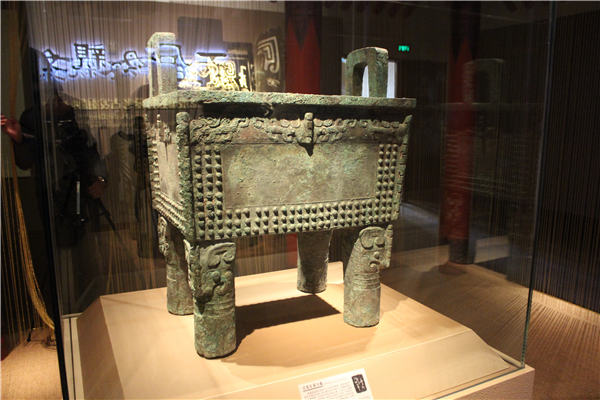
For example, after Fu Hao's death, she was betrothed by Wu Ding to his late father. Though it may sound strange today, Feng says that it reflects the king's homage to his ancestors and his love for his wife.
"He wanted Fu Hao to be blessed by the ancestors. In the early part of Chinese civilization, a necromantic culture played an important role."
There are other unresolved mysteries about her. Fu Hao is generally believed to have died before turning 50, and some scholars speculate she could have died in her 30s. But no conclusive proof is available to prove either assumption.
The ongoing exhibition is a part of the Capital Museum's series of special events marking its 35th anniversary.
According to Bai Jie, the head of the museum, relics from the Fu Hao tomb are scattered among different institutions nationwide, but are mainly with the Chinese Academy of Social Sciences and with the Henan Museum.
"So it is both rare and fortunate to have them juxtaposed in one museum (for the exhibition)," he says.
Contact the writer at wangkaihao@chinadaily.com.cn
If you go
9 am-5 pm, through June 26.
Entrance until 4 pm (closed on Mondays).
Exhibition Hall B, the first floor, the Capital Museum. 16 Fuxingmenwai Dajie (Avenue), Xicheng district, Beijing. 010-6339-3339.
www.capitalmuseum.org.cn.
Online reservation is needed.


















































